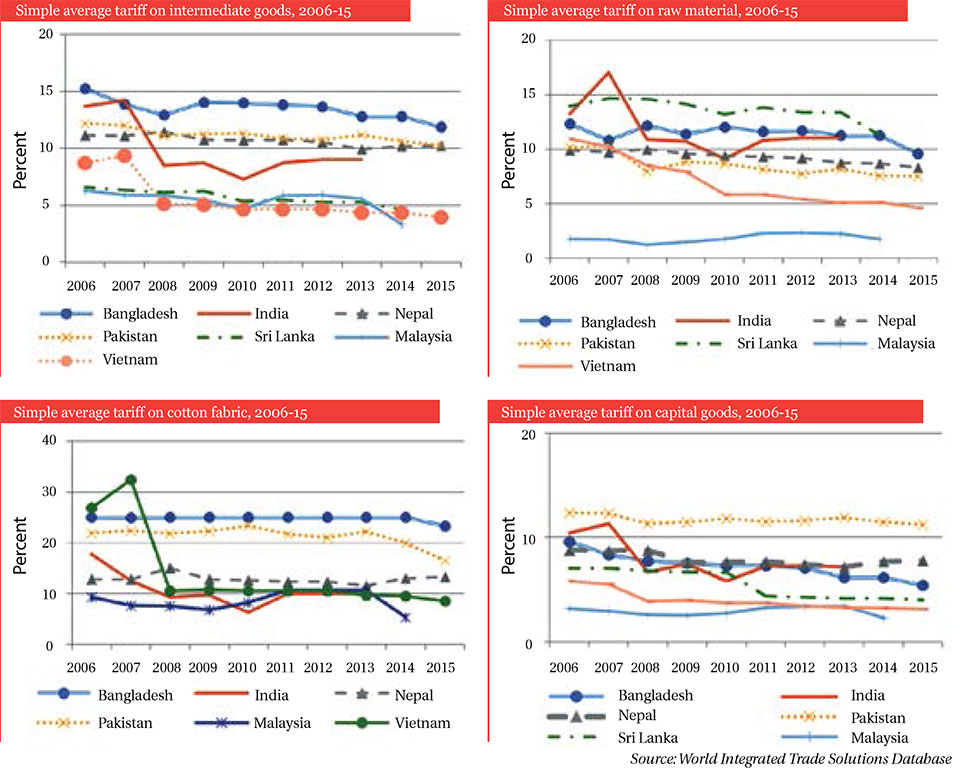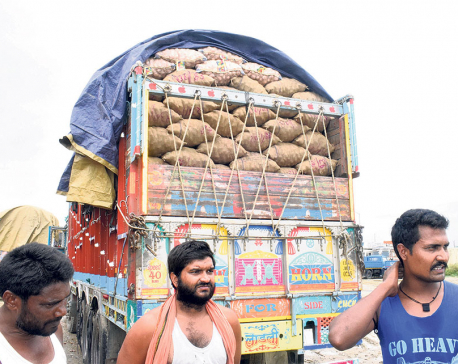
OR
WB recommends Nepal reduce import tariff on raw material
Published On: December 22, 2017 10:48 AM NPT By: Sagar Ghimire | @sagarghi

'Lower tariff will boost competitiveness of Nepali exporters'
KATHMANDU, Dec 22: The government should move away from import-based taxation by lowering tariff rates if it wants to improve the import-to-export environment in the country, a recent report prepared by the World Bank Group states.
In the report entitled 'Trade Policy Reforms for the 21st Century: The Case of Nepal' released on Wednesday, the World Bank has urged the government to eliminate import tariffs for intermediates used for high potential export products.
However, such tariffs can be reduced gradually if the country is concerned about the compromise on tariff-related revenues, according to the report. The report also states that high tariffs on imported intermediate goods, the ingredients to finished products, cut into the competitiveness of Nepali exporters.
Most of the finished goods in Nepal that get exported use imported components. Pashmina producers, footwear manufacturers, carpet manufacturers and tea producers all import some components to produce finished goods because either the raw materials are not locally available or the imported materials are typical of a higher quality as demanded by those who import it. Among other reasons, some also import such products to get it on competitive prices from global markets.
The World Bank report shows that 90 percent of Nepali exporters directly import some of the components of their finished goods from other countries.
High tariffs on imported intermediaries and capital goods coupled with restrictive trade policies affect the competitiveness of Nepali exporters in the international markets, according to the report.
Nepal has one of the highest tariffs on such intermediaries. For instance, in 2015, Nepal had a simple average tariff of 10.2 percent on intermediate goods, which was 6.3 percent higher than Vietnam's and 6.9 percent higher than Malaysia's simple average tariff on intermediate goods which stood at 3.9 percent.
“Nepali exporters are small and struggle to grow rather than to enter markets. Problem is in the intensive margin,” said Gonzalo Varela, one of the authors of the report, in a Twitter post.
Acknowledging that tariff reform becomes a concern for developing countries, particularly Nepal, from revenue cost perspective, the report calls for embracing a gradual approach to reduce tariffs on different intermediaries. “Nepal would benefit from a gradual approach to reduced tariffs if it is not going to compromise tariff revenues,” read the report which was co-authored by Ashish Narain and Varela. “To improve the import-to-export environment in a fiscally responsible manner, targeted tariff reductions on intermediate inputs for key export sectors are recommended since they can be achieved with negligible revenue losses,” it added.
These reforms are likely to help increase export competitiveness through access to better technologies and increased competition, the report states.
A more detailed tariff reform that focuses on key intermediate inputs for export sectors would result in negligible revenue losses, the authors say in the report. “The impact of reducing tariffs on cotton fabrics, intermediate inputs for ready-made garments, and key intermediate goods imported by apparel, pashmina, and carpet manufacturers seems to be almost negligible in terms of total revenues,” the report states.
The reduction in tariffs has another benefit too. According to the report, reduction in tariffs, particularly in sectors with high tariff rates, could lead to increased revenues due to a reduction in misreporting of import values.
You May Like This

Government steps back from decision to examine veggies, fruits from India
KATHMANDU, July 5: The government has stepped back from the decision to examine the vegetables and fruits that are imported... Read More...

Aug 21: 6 things to know by 6 PM
Your daily dose of missed important news of the day. ... Read More...

Helping women re-envision a better Nepal: Women LEAD Nepal
KATHMANDU,March 7: Women LEAD Nepal started as an idea that women and girls could change the trajectory of Nepal’s future and... Read More...








Just In
- Customs revenue collection surpasses target at Tatopani border, Falls behind at Rasuwagadhi border in Q3
- Rain shocks: On the monsoon in 2024
- Govt receives 1,658 proposals for startup loans; Minimum of 50 points required for eligibility
- Unified Socialist leader Sodari appointed Sudurpaschim CM
- One Nepali dies in UAE flood
- Madhesh Province CM Yadav expands cabinet
- 12-hour OPD service at Damauli Hospital from Thursday
- Lawmaker Dr Sharma provides Rs 2 million to children's hospital











Leave A Comment